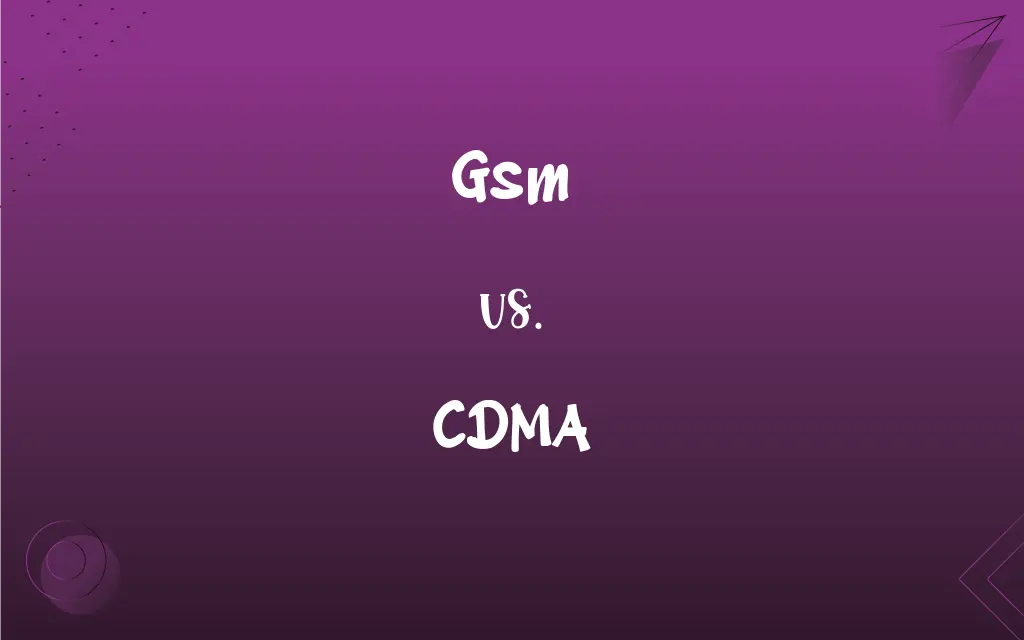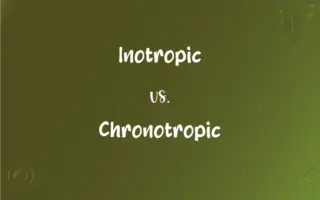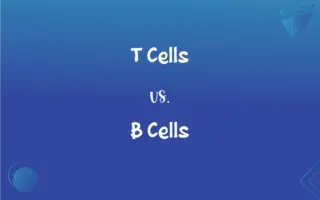GSM vs. CDMA: What's the Difference?
Edited by Aimie Carlson || By Harlon Moss || Updated on October 20, 2023
GSM (Global System for Mobile Communications) and CDMA (Code Division Multiple Access) are both cellular communication standards, but GSM uses time division while CDMA employs spread-spectrum technology.

Key Differences
GSM, or Global System for Mobile Communications, and CDMA, standing for Code Division Multiple Access, are two primary technologies used for mobile telecommunications. GSM is more widely adopted globally, making it the leading mobile communication standard in many parts of the world. On the other hand, CDMA has had significant usage in countries like the United States, although its prevalence has decreased over time.
The operational principle behind GSM involves dividing the frequency bands into multiple channels. It achieves this by utilizing a method called Time Division Multiple Access (TDMA), allowing multiple calls to use the same frequency by dividing them into time slots. In contrast, CDMA doesn't divide its frequency range; instead, it uses a spread-spectrum technique. Every call in the CDMA system gets a unique code, allowing multiple calls to be differentiated and multiplexed over the same bandwidth.
When considering SIM cards, a notable difference emerges. GSM phones typically require a SIM card to connect to the network, making it easier for users to switch devices by merely moving their SIM card. CDMA devices, in their traditional form, did not rely on SIM cards; the user's information was instead programmed into the phone. However, with the advent of 4G and LTE, modern CDMA phones have also started to adopt SIM cards.
The global reach of GSM gives it an advantage in international roaming. Travelers with GSM phones often find it easier to catch signals in various countries due to its widespread acceptance. On the flip side, CDMA, with its limited global reach, might present challenges in international connectivity. However, it's crucial to note that the distinction between GSM and CDMA has become less pronounced in recent years, especially with the rise of 4G LTE, which has become a universal standard across the globe.
One more distinction lies in the quality and consistency of the call. Some users believe CDMA provides a clearer and more consistent connection in comparison to GSM, especially in areas with lower coverage. However, GSM offers faster data rates and better spectral efficiency. Regardless of these differences, the technology transition to 4G and 5G has blurred the lines between GSM and CDMA to a large extent.
ADVERTISEMENT
Comparison Chart
Basic Technology
Uses Time Division Multiple Access (TDMA).
Uses spread-spectrum technology.
Global Usage
Widely adopted globally.
Limited global reach, majorly in the U.S.
SIM Card Dependency
Requires a SIM card.
Traditionally did not, but modern devices may use SIMs.
International Roaming
Better equipped due to global acceptance.
Can present challenges due to limited reach.
Call Quality
Faster data rates, better spectral efficiency.
Believed to offer clearer, consistent connections.
ADVERTISEMENT
GSM and CDMA Definitions
Gsm
A global mobile communication standard.
She bought a GSM phone for her international travels.
CDMA
A cellular technology employing spread-spectrum techniques.
She noticed her CDMA phone had a clearer connection in remote areas.
Gsm
Requires the use of a SIM card.
He transferred his contact information using a GSM-compatible SIM card.
CDMA
Common in specific regions, like the U.S.
While traveling to the U.S., he got a CDMA-compatible phone.
Gsm
Utilizes time division to manage multiple calls.
The GSM network's time division ensures efficient call handling.
CDMA
Originally did not rely on SIM cards.
His older CDMA phone didn't have a slot for a SIM card.
Gsm
Dominant technology in many countries.
In Europe, GSM is the prevalent mobile communication technology.
CDMA
Doesn't divide its frequency range for calls.
CDMA's spread-spectrum method multiplexes calls over the bandwidth.
Gsm
Known for faster data rates in comparison to CDMA.
For quicker internet browsing, he chose a GSM network.
CDMA
Provides consistent call quality in areas of low coverage.
Even in the basement, her CDMA phone had a stable connection.
Gsm
An international telecommunications standard for the transmission of voice and data between cellphones and other mobile devices.
Gsm
Init of grams per square metre(unit for measuring the weight of paper)
FAQs
Which technology is believed to offer a clearer connection, GSM or CDMA?
Some users believe CDMA offers a clearer and more consistent connection compared to GSM.
Is international roaming better with GSM or CDMA?
GSM generally offers better international roaming due to its widespread global acceptance.
Which is more globally adopted, GSM or CDMA?
GSM is more widely adopted globally compared to CDMA.
Are there areas where CDMA is dominant over GSM?
Yes, in regions like the United States, CDMA has been more dominant than GSM.
Which offers faster data rates, GSM or CDMA?
GSM is generally known for offering faster data rates compared to CDMA.
Do GSM phones always require a SIM card?
Yes, GSM phones typically require a SIM card to connect to the network.
Are the distinctions between GSM and CDMA still prominent?
The distinctions have become less pronounced, especially with the rise of 4G and 5G technologies.
Can I use a CDMA phone in Europe?
Europe predominantly uses GSM, so a traditional CDMA phone might not work. However, modern phones with 4G capabilities could be compatible.
Do CDMA phones traditionally use SIM cards?
No, traditional CDMA phones did not rely on SIM cards, but modern ones with 4G and LTE capabilities do.
How does CDMA handle multiple calls?
CDMA uses a spread-spectrum technique, giving every call a unique code to multiplex over the same bandwidth.
Is 4G LTE based on GSM or CDMA?
4G LTE is a separate standard that has become universally adopted and isn't strictly based on either GSM or CDMA.
Can I switch from GSM to CDMA by just changing my SIM card?
No, switching between GSM and CDMA typically requires a different device since they're based on different technologies.
Why do some people prefer CDMA in areas with low coverage?
CDMA is believed to provide a clearer and more consistent connection in areas with low coverage.
Are GSM phones unlocked?
Not necessarily. While GSM phones use SIM cards, they can be locked to specific carriers. They need to be unlocked to use with other carriers.
Are there devices that support both GSM and CDMA?
Yes, some modern smartphones are designed to support both GSM and CDMA networks.
How does GSM manage multiple calls on the same frequency?
GSM uses Time Division Multiple Access (TDMA) to divide calls into time slots on the same frequency.
Why do some travelers prefer GSM phones?
GSM is more widely adopted globally, making it preferable for travelers for better connectivity.
Is CDMA still expanding globally?
CDMA's global expansion has slowed, with GSM and 4G LTE taking precedence in many regions.
Which technology is older, GSM or CDMA?
GSM was formally introduced before CDMA.
Are there any notable call quality differences between GSM and CDMA?
While some users believe CDMA offers clearer call quality, especially in areas with low coverage, GSM offers faster data rates and better spectral efficiency.
About Author
Written by
Harlon MossHarlon is a seasoned quality moderator and accomplished content writer for Difference Wiki. An alumnus of the prestigious University of California, he earned his degree in Computer Science. Leveraging his academic background, Harlon brings a meticulous and informed perspective to his work, ensuring content accuracy and excellence.
Edited by
Aimie CarlsonAimie Carlson, holding a master's degree in English literature, is a fervent English language enthusiast. She lends her writing talents to Difference Wiki, a prominent website that specializes in comparisons, offering readers insightful analyses that both captivate and inform.































































